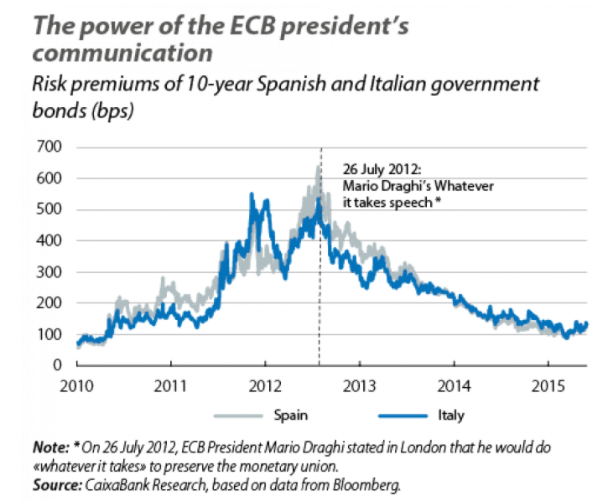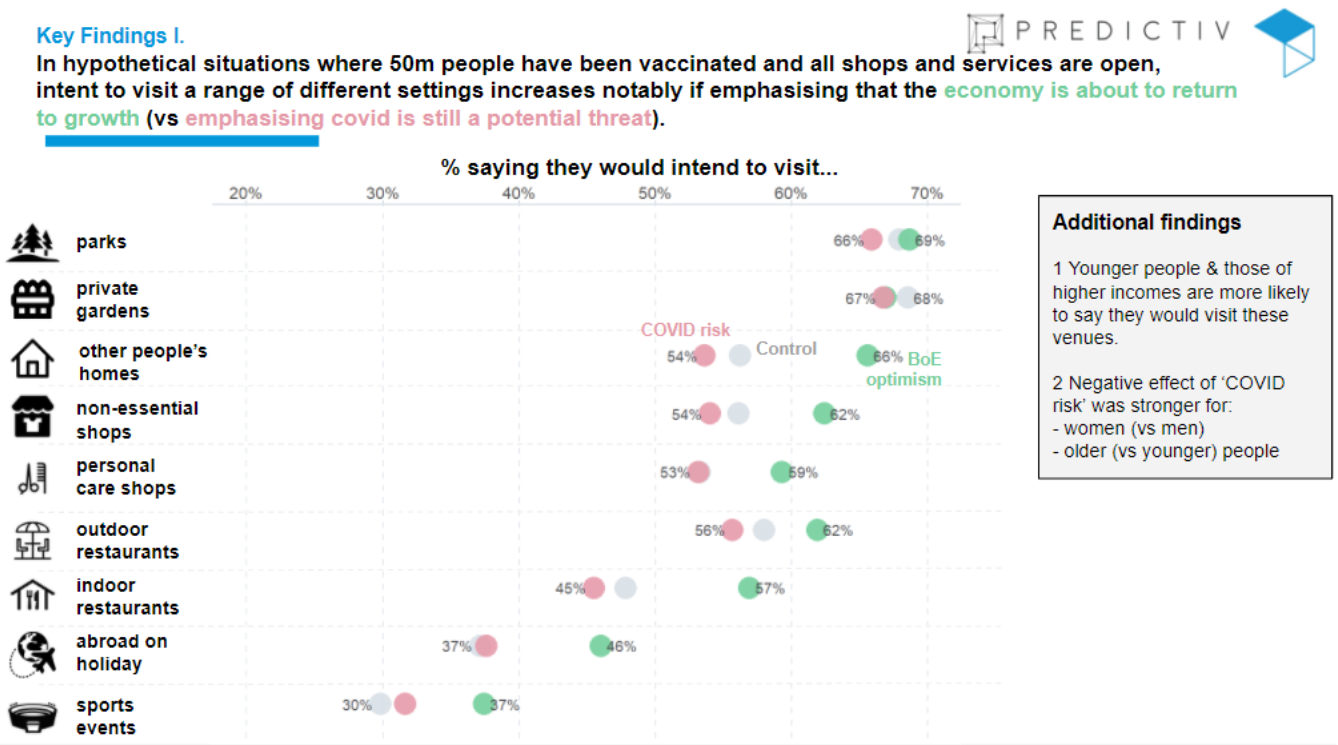Having made a major step out of lockdown, we’re all hoping for a strong economic resurgence while avoiding another wave. Google Mobility data suggests that UK retail and recreation premises were still 27% less busy on the 6th of May than prior to the pandemic. However, that’s up from 60% less busy just before the reopening in England on the 12th of April. Did you try to squeeze in as many activities as possible, or are you more cautious in your return to ‘normality’?
How Economic Narratives Can Influence our Day to Day Lives
At BIT we wanted to learn more about the role of economic narratives in our decision to go to the pub, the shop or the hairdresser.
Narratives are stories that spread through society and help us make sense of the world around us. Economic narratives may include stories about what’s going on in the economy, the role of government, and what other consumers and businesses are doing. Some economic narratives you may have heard on the grapevine include ‘people are going out in their droves to spend’ or ‘it’s all about reigning in those purse strings’. These narratives are propagated through the media and social networks and can be enormously powerful in shifting people’s behaviour.
Words have the power to change economic outcomes. When the president of the European Central Bank Mario Draghi promised ‘we will do whatever it takes’ in the midst of the Euro crisis in 2012, he did not announce a single policy measure. Nonetheless, the market for government bonds reacted – investors calmed down and the risk premiums on 10-year bonds of distressed countries like Italy and Spain dropped sharply.

Figure 1. The market for government bonds reacted strongly to Mario Draghi’s speech.
How Narratives Can Influence Consumer Behaviour
To find out which role narratives could play in influencing consumer behaviour as we exit lockdown BIT ran an online experiment using our digital tool Predictiv. We asked participants to imagine a scenario in which almost all UK adults had received a vaccine and coronavirus restrictions were fully lifted. Before asking them how likely they were to engage in certain economic activities (e.g. going to a non-essential shop, a restaurant, a sports event) we showed them additional information, all based on recent news stories:
- One group saw a quote from Prof. Chris Whitty and Sir Patrick Vallance, saying that overseas travel and new variants mean COVID-19 will never be wiped out.
- A second group saw an optimistic quote from Bank of England Chief Economist Andy Haldane, suggesting the economy is poised to bounce back like a coiled spring.
- A third group was told about the activities of others, emphasising a rush on bookings for holidays, theatres and restaurants.
- A fourth control group did not receive any additional information.

Figure 2. Results from our experiment. Note that the group seeing information on the economic activity of others is not displayed here for simplicity. It performed very similarly to the Bank of England optimism group shown in green.
Intentions were lowest when the risk of variants was emphasised, but not much lower than in the control group that received no additional information.
This suggests the narrative of COVID risk is widespread and deeply ingrained in the thinking of many.
Behaviours in the context of the reopening are still malleable.
As shown in Figure 2, the optimistic Bank of England quote made people 11% more likely to say they would intend to visit a non-essential shop and 19% for indoor restaurants (compared to the control group).
We saw similarly high intentions among the group that was told about many others rushing back to the high street.
This is unlikely to just be short-term priming: the influence of stories about what others are doing is also clear from real-world field studies. A field study in China found that restaurant visits post-lockdown increased when people were told about the plans of their neighbours. Among the previously hesitant, this intervention increased restaurant visits by 37%. When people were given the truth about what others were doing – correcting the mistaken narrative that others were hesitant to go out – people saw this as a signal it was safer than they thought, and they revised their plans.
How Businesses Can Harness the use of Narratives
Our experiment not only shows the potential power of narratives, it also demonstrates that the impact of communications can be put to the test. Three things policymakers could do to harness the power of narratives are:
- Understand the narratives circulating across society. What are consumers and businesses hearing about the economy, how safe it is to go out, and how are they interpreting this? Are there key misperceptions that are influencing their decisions?
- Design policy with narratives in mind. The way policies are designed and implemented could initiate new narratives or reinforce existing ones. For example, financial incentives like the Restart Grant that encourage many businesses to re-open all at once could feed a narrative of ‘life going back to normal’.
- Test communications. We know the power of communications – but it is still largely seen as a form of art. Couldn’t it be a science as well? Policymakers and speechwriters should create multiple drafts and test how effective they are at shaping our beliefs and behaviour on what is safe to do.
Use BIT to Introduce Narratives that Benefit Your Business
Using BIT’s expertise, you can create narratives that benefit your business. From understanding the behaviour of your consumers to creating and implementing solutions that will see a positive change in your consumers behaviour.





